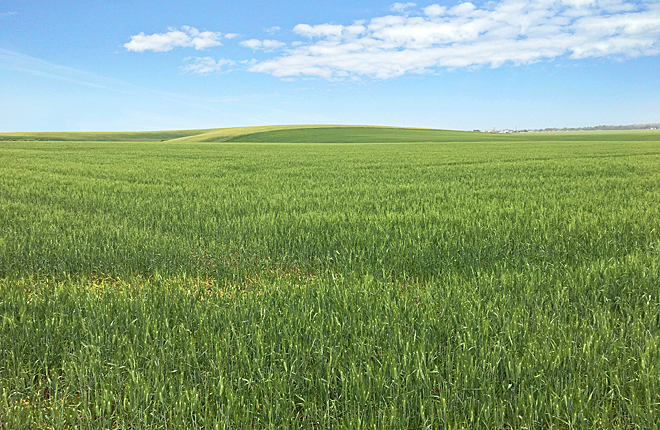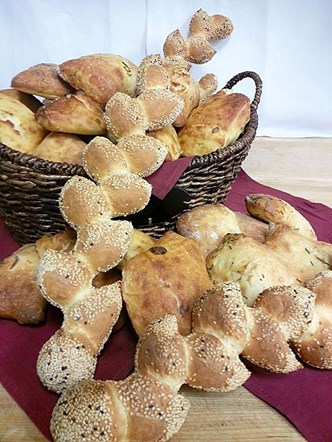ARS-led Wheat Research Is “Al Dente!”
Italian pasta is cooked to perfection when it is “al dente” (firm to the tooth). A coarse meal called “semolina” is used to make pasta, and the primary source of it is the hard, amber-colored kernels of durum wheat.
Producing semolina requires specialized mills, which limits durum wheat’s food uses to pasta, couscous, and a few other products. Certain Mediterranean breads are also made from it. But by and large, durum wheat accounts for only 8 to 10 percent of all wheat types produced globally, notes Craig Morris, an Agricultural Research Service (ARS) chemist.
|
|
Morris, though, has a soft spot for durum, which, despite its rock-hard kernels, is better adapted to hot, arid growing regions than the more commonly grown bread wheat varieties. Over the past 20 years, he and colleagues have delved deep into the genetics of wheat kernel development for clues that could broaden the range of products made from durum wheat, which comprises 3 to 5 percent of America’s total wheat crop.
And find clues they did—one quite surprising.
“Turns out, the hard kernel texture has no relationship to the quality of the pasta,” says Morris, who is in ARS’s Wheat Health, Genetics, and Quality Research Unit in Pullman, Washington. What makes durum the go-to wheat for pasta is its yellow color and high-protein content, which gives pasta its firmness. Additionally, “the key features of good pasta—bright yellow color and firm ‘bite’—have nothing to do with the particle size of the semolina made from the kernels,” he asserts.
Based on that premise, Morris and a team of university and industry scientists set out to create a soft durum wheat whose kernels could be easily milled into a fine flour, rather than a coarse semolina. The flour would be suitable not only for pasta and spaghetti but also for pizza crust, bread, and other baked goods.
The breakthrough came with their discovery of two genes that control kernel texture in soft bread wheats, namely, Puroindoline a (Pina) and Puroindoline b (Pinb).
Using classical plant breeding methods, the researchers moved the genes into a prized Italian durum variety called “Svevo.” The eventual result—released in 2016—was “Soft Svevo,” the first soft durum wheat of its kind.
Tests show that flour made from Soft Svevo is similar to that of soft bread wheats. It also outscored traditional durum flour on processing and handling evaluations, thanks to its smaller particle size, improved water uptake, and lower levels of damaged and broken starch granules.
Importantly, Soft Svevo’s high-protein flour imparted an appealing aroma, flavor, and yellow color to pizza crusts, baguettes, pan breads, and other baked goods the researchers made. In milling tests, Soft Svevo’s easily milled kernels translated into energy savings of 75 percent and water savings of 15 percent.
Three U.S. firms are now conducting precommercial trials of Soft Svevo under license from ARS. Requests for it have come from Japan, South Korea, and Morocco.
Other soft durum varieties are in the works. But even with diverse new uses for them on the horizon, one will remain a priority: making a premium pasta that’s “molto bene” (very good), says Morris.—By Jan Suszkiw, ARS Office of Communications.
Key Facts
- Durum wheat has hard, amber-colored kernels.
- Durum wheat is mainly grown for making pasta and couscous.
- An ARS-led team bred the first soft durum wheat.
- Soft durum flour can be used to make breads and pizza crusts.
Full Story








